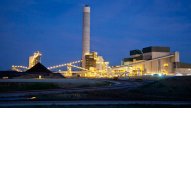Mine Safety
Safer Union Mines

Studies show that union mines are much safer than non-union mines. A May 2011 report from the John M. Olin Program in Law and Economics at Stanford University found a "substantial and significant decline in traumatic mining injuries and fatalities" at underground mines where the United Mine Workers of America represented workers.
The report found that over two decades there were:
- between 18 and 33 percent fewer traumatic injuries at union mines, compared to non-union operations;
- between 27 to 68 percent fewer fatal accidents at union mines (the range in figures accounts for possible statistical variations because of small sample sizes).
Need a Lawyer?
If you are a coal miner and need legal representation on a mine safety issue, we suggest you contact:
Wes Addington
Appalachian Citizens Law Center
317 Main Street
Whitesburg, Ky 41858
606-633-3929
[email protected]
OR
Tony Oppegard
Attorney-At-Law
P.O. Box 22446
Lexington, Ky 40522
859-948-9239
[email protected]
 Above all else, coal companies should be diligent about the safety of their workers and the conditions inside their mines. Officials responsible for enforcing mine safety laws should do so wihout interference. And elected leaders should strengthen those laws when the need is clearly demonstrated.
Above all else, coal companies should be diligent about the safety of their workers and the conditions inside their mines. Officials responsible for enforcing mine safety laws should do so wihout interference. And elected leaders should strengthen those laws when the need is clearly demonstrated.
Unfortunately, none of this happens as it should.
An examination of 320 coal mine deaths from 1996 to 2005 by Ken Ward Jr. of the Charleston Gazette found that 91 percent of those deaths could be traced to a serious safety violation, including not performing required safety checks, poorly maintained equipment, roof control and ventilation violations, and inadequate training.

The disaster that killed 29 miners at the Upper Big Branch Mine in West Virginia in April 2010 reminds us that not enough has changed since Ward's report. Yet legislation to address some of the enforcement issues brought to light by this tragedy is stalled in the U.S. Congress.
KFTC has established this space to provide news, analysis and opinions about mine safety issues. We'll update the list below as new articles and reports become available.
Nation's newest coal plant isn't providing cheap power
When Peabody energy sold shares in a 1600 MW coal-burning power plant to towns and electric co-ops in the mid-west, communities were promised cheap power. Now the first bills are coming due. Residents of Paducah and Princeton in western Kentucky, along with 2.5 million other customers in nearby states, face higher than expected costs and economic risks.
New power plant poses high costs, risks for western Kentucky ratepayers
Residents of many mid-west towns, including Princeton and Paducah in western Kentucky, are beginning to face the sticker-shock of paying for the new Prairie State project, a 1600 MW coal-burning power plant developed by Peabody Energy. The plant, which is close to completion, has been called “the last of its kind in this country” by the New York Times.
MSHA: 19 miners died in first half of 2012
During the first half of 2012, 19 miners died in work-related accidents at the nation's mines. "While 19 is the second-lowest number of mining deaths recorded in mining midyear, we know that these deaths are preventable," said Joseph A. Main, assistant secretary of labor for mine safety and health.
Editorial | A war on workers
Some coal operators supposed to provide safe and secure employment for miners instead are piling up life-threatening safety violations — in at least one case as clueless state inspectors found no serious problems at a Harlan County mine. The failures of rogue coal operators are costing communities jobs.
Page
- Home
- |
- Sitemap
- |
- Get Involved
- |
- Privacy Policy
- |
- Press
- |
- About
- |
- Bill Tracker
- |
- Contact
- |
- Links
- |
- RSS


